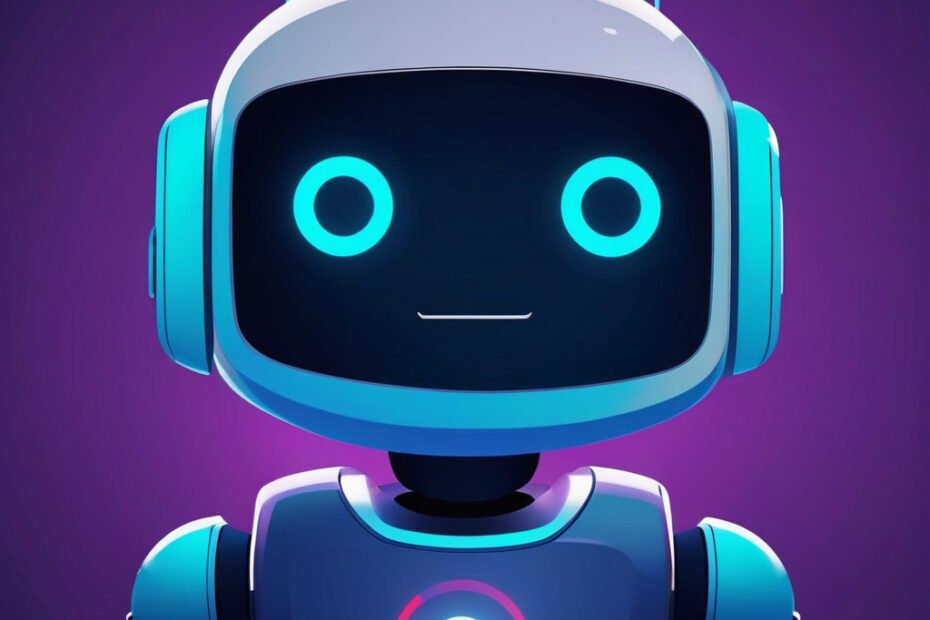In today’s digital landscape, AI chatbots have revolutionized the way businesses interact with their customers, and Google AI chatbot, also known as Dialogflow, stands as a prominent player in this arena. Let’s delve deeper into the capabilities of Google AI chatbot, its features, integration with Google services, real-world applications, limitations, challenges, and future prospects to gain a comprehensive understanding of its impact on conversational experiences.
Table of Contents
ToggleIntroduction to AI Chatbots
AI chatbots are AI-powered programs designed to simulate human-like conversations using natural language processing (NLP) and machine learning (ML). They have become crucial for businesses to deliver efficient customer service, boost sales, and engage users effectively in today’s digital age where instant responses and personalized interactions are paramount.
Overview of Google AI Chatbot (Dialogflow)
Google’s Dialogflow is a cloud-based platform empowering developers to create intelligent chatbots across various platforms like websites, mobile apps, and voice-enabled devices. Its robust natural language understanding (NLU) capabilities enable context-rich conversations, allowing chatbots to comprehend user intents, extract relevant entities, and provide accurate responses, leading to enhanced user experiences.
Key Capabilities
- NLU: Dialogflow excels in understanding user queries in multiple languages and dialects, ensuring inclusivity and global accessibility.
- Intent Recognition: It accurately identifies user intents or purposes behind their queries, enabling chatbots to provide relevant and context-aware responses, fostering meaningful interactions.
- Entity Extraction: Dialogflow can extract key entities or parameters from user inputs, such as dates, locations, product names, etc., to facilitate personalized interactions and actions, improving efficiency and user satisfaction.
Advantages over Traditional Chatbots
Dialogflow offers several advantages over traditional chatbots, including:
- Scalability: It leverages Google’s robust infrastructure, ensuring scalability and reliability even under high traffic and complex scenarios, meeting business demands seamlessly.
- ML Capabilities: Dialogflow incorporates ML models for continuous learning and improvement, enhancing chatbot performance and accuracy over time, adapting to evolving user needs effectively.
- Cross-platform Compatibility: It supports integration with various platforms and channels, including web, mobile, messaging apps, and voice assistants like Google Assistant, ensuring consistent user experiences across devices and touchpoints.
Key Features and Functionalities
Dialogflow provides a plethora of features and functionalities that empower developers to create rich conversational experiences tailored to their business needs. Some of the key features include:
- Multi-language Support: Enables chatbots to understand and respond in multiple languages, catering to a global audience and breaking language barriers.
- Contextual Understanding: Maintains context across conversations, allowing for more natural and engaging interactions, enhancing user satisfaction and retention.
- Rich Responses: Supports diverse response formats such as text, cards, images, buttons, and even custom payloads for enhanced user experiences, driving user engagement and loyalty.
- Analytics and Insights: Provides analytics dashboards to track chatbot performance, user interactions, and identify areas for optimization, enabling data-driven decision-making and continuous improvement.
Use Cases and Success Stories
Google AI chatbot has been successfully deployed across various industries, demonstrating its versatility and effectiveness in solving real-world challenges and driving business outcomes. Some notable use cases include:
- E-commerce: Implementing chatbots for product recommendations, order tracking, and customer support, enhancing the shopping experience and increasing sales conversions.
- Healthcare: Assisting patients with appointment scheduling, symptom analysis, and medication reminders, improving healthcare accessibility and patient outcomes.
- Finance: Facilitating banking transactions, account inquiries, and personalized financial advice, improving operational efficiency and customer satisfaction in the finance sector.
Success Stories
- Domino’s Pizza: Used Dialogflow to create a chatbot for pizza ordering, enhancing customer convenience, reducing order processing time, and boosting customer loyalty.
- Ticketmaster: Implemented chatbots for event discovery, ticket purchasing, and customer inquiries, improving user engagement, and driving ticket sales.
Limitations and Challenges
While Google AI chatbot offers advanced capabilities, developers may encounter certain limitations and challenges that require attention and mitigation strategies:
- Training Data Quality: Ensuring high-quality training data is crucial for accurate intent recognition and response generation, requiring continuous monitoring and refinement.
- Handling Complex Dialogues: Managing complex dialogues and maintaining conversational context across multiple turns can be challenging, necessitating robust dialog management strategies and design principles.
- Privacy and Ethics: Addressing privacy concerns related to user data handling, consent management, and ethical AI practices is paramount, requiring compliance with regulations and ethical guidelines.
Future Prospects and Advancements
Looking ahead, Google AI chatbot (Dialogflow) is poised for further advancements and innovations in conversational AI, driven by ongoing research and development efforts in key areas such as:
- Deep Learning: Leveraging deep learning techniques to enhance chatbot capabilities in understanding nuances, context, and user preferences, delivering more personalized and meaningful interactions.
- Reinforcement Learning: Exploring reinforcement learning algorithms to enable chatbots to learn from user interactions and improve decision-making processes autonomously, enhancing adaptability and performance.
- Natural Language Generation (NLG): Advancing natural language generation capabilities to generate human-like responses, narratives, and explanations, fostering more engaging and informative conversations.
Other Stories from this blog
If you enjoyed this blog, you’ll likely find other stories just as fascinating. Click the link below to uncover more about artificial intelligence and expand your knowledge
Conclusion
Google’s AI chatbot powered by Dialogflow represents a pinnacle in conversational AI, offering developers a robust platform to create intelligent and engaging chatbot experiences across various industries and use cases. Its integration with Google services, rich features, successful deployments, and ongoing advancements underscore its significance in driving digital transformation, enhancing customer experiences, and redefining human-machine interactions.
While challenges like data quality, dialog management, and ethical considerations persist, the future prospects of Google AI chatbot are promising, paving the way for more advanced, personalized, and intuitive conversational experiences. Embracing Google AI chatbot empowers businesses to stay competitive, innovate customer interactions, and unlock new opportunities in the AI-driven era, fostering growth, efficiency, and customer satisfaction. In essence, Google AI chatbot is not just a tool but a strategic enabler for businesses navigating the complexities of modern AI-powered conversational technology.
